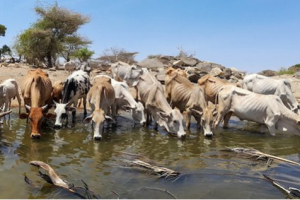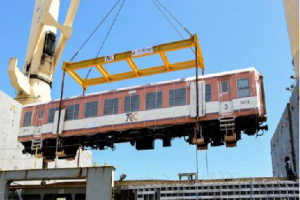
Barely a fortnight after fuel prices in Uganda crossed the Ush6,000 ($1.61) mark per litre for petrol or diesel, the government says it has no solutions for price cuts at the pump even as they spiral out of reach for motorists, on account of global dynamics in eastern Europe.
There are also fears that next month’s Kenyan General Election could disrupt supplies.
“We go by what is prevailing on the world market,” said Rev Frank Tukwasibwe, commissioner for petroleum supply in Uganda’s Ministry of Energy. Even as the war between Russia and Ukraine that triggered a spike in global crude prices enters its fifth month, this week crude prices tumbled, giving some optimism that there could be a downstream ripple effect internationally.
But industry players remain cautious saying that while a dip in crude oil prices is good, motorists in East Africa will continue to feel the pinch of high prices at the pump until mid-August, should prices continue to fall.
“I am starting to see some good news regarding the price of crude oil,” said Boniface Kipchirchir, head of operations at Stabex International Uganda. “We expect prices to come down and stabilise perhaps next month. But the Kenya elections might disrupt supplies to Uganda, even when the prices have stabilised.”
On July 5, Brent Crude traded below $100 per barrel for the first time in three months but climbed back above $100, while the West Texas Intermediate, the US benchmark, dropped to 98.53 on July 6.
Crisis levels
Motorists have borne the brunt of rising fuel prices for 12 months – the longest spell in the region – but in Uganda it reached crisis levels from January this year when a protest by truck drivers over a mandatory Covid-19 tests created a hold-up at the Kenya border, blocking petroleum supplies for weeks.
A few weeks later, geopolitical tensions that escalated into the ongoing war between Russia and Ukraine resulted in prices soaring from below $80 at the start of 2022 to over $100 per barrel currently.
Oil marketing companies have responded with frequent fuel price increases at the pump, sometimes twice in one day. For instance on July 1, Azed Kakooza, a tour operator, fuelled his Toyota Hiace in Kampala at Ush6120 ($1.64) for a morning trip to Iganga, eastern Uganda. On his return, he went to fill up for the next day’s journey but found the price had jumped by Ush30 at the same station.
In Kenya, pump prices have been rising since the beginning of the year and are set to soar with the planned retraction of a fuel subsidy.
Since January, the prices of petrol and diesel have risen by over 22 percent and are currently at a record high, even with the fuel subsidy that has been catering for about Ksh30 ($0.25) per litre.
Kenya’s Treasury, however, said last month that starting July, it will gradually withdraw the subsidy.
“The cost of fuel subsidy could eventually surpass its allocation in the national budget thus potentially escalating public debt to unsustainable levels and disrupting the government’s plans to reduce rate of debt accumulation,” said Treasury Cabinet Secretary Ukur Yatani.
In April, Kenya faced a fuel shortage that almost paralysed commercial activity across the country and which was blamed on delayed remittance of due subsidies to oil marketers by the ministry.
It, however, later emerged that oil marketers had been deliberately hoarding supplies in anticipation of higher retail prices after a review by the Energy and Petroleum Authority (Epra), which indeed raised the official pump prices for the first time this year.
At the time, Epra raised fuel prices by Ksh9 ($0.086) to Ksh144.62 ($1.25) per litre of super petrol and Ksh125.5 ($1.09) for diesel. It has continued to raise the retail prices in the two subsequent reviews in May and June.
Now, super petrol is retailing at Ksh159.12 ($1.35) and diesel price is Ksh140 ($1.19), and could rise further at the next review set for July 14.
THE ETHIOPIAN HERALD TUESDAY 12 JULY 2022




